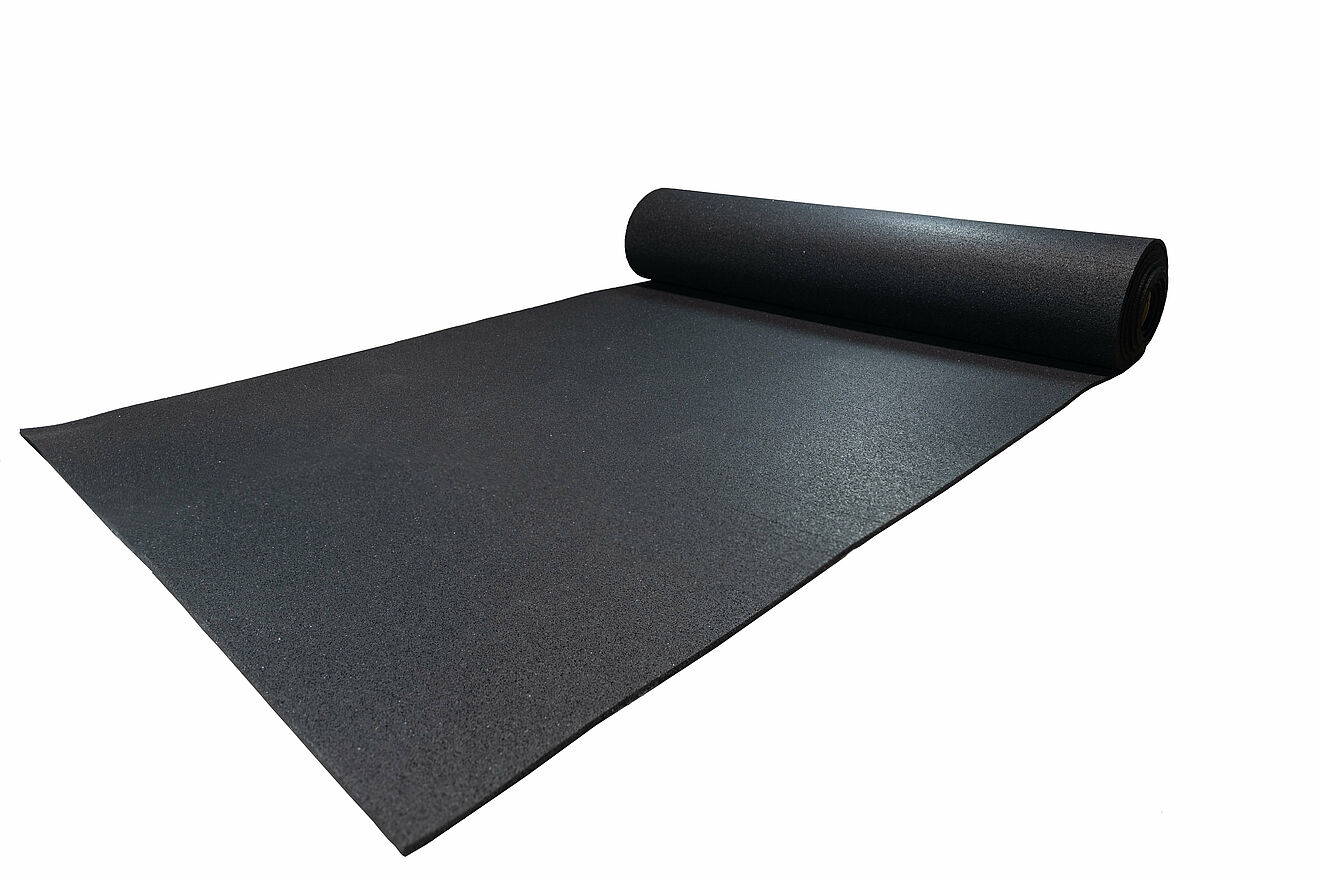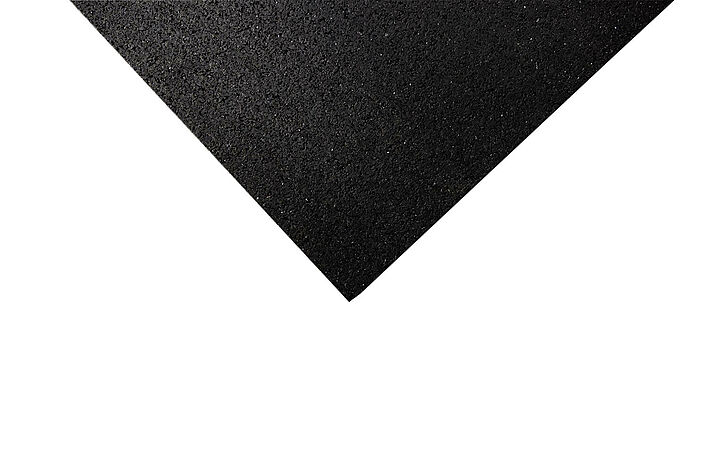REGUPOL solar fire
More safety under your photovoltaic system
REGUPOL solar fire is a protection layer in accordance with DIN 18531 and is intended for PV flat roof systems with in-creased fire protection requirements. It is resistant against flying sparks and radiant heat acc. general appraisal certificate: BROOF (t1).
Thanks to the fire protection finish, REGUPOL solar fire gives additional safety for the manufacturer, installer and operator, as it significantly reduces the fire load. The eight-millimetre-thick material is flame retardant and, when laid over the entire surface, is considered "hard roofing" with the classification BROOF (t1) according to DIN EN 13501-5 – resistant to flying sparks and radiant heat. The protective layer according to DIN 18531 and the Flat Roof Guidelines of course sustainably secures the waterproofing and insulation under the photovoltaic system against mechanical, thermal and chemical influences. REGUPOL solar fire is pressure-resistant, permanently elastic, resistant to microbes, temperature and ageing, water-permeable, vapour-permeable, rot-proof, largely resistant to acids and alkalis, and antistatic according to EN 1815. It can be designed to match the mounting system and is individually customisable. REGUPOL solar fire consists of up to 95 percent PUR-bonded rubber granules from tyre retreading, based on recovered and recycled polymer raw materials. The protective layer is thus a prime example of a circular economy and upcycling.


Features
- Protective layer according to DIN 18531 and the Flat Roof Guidelines
- Consists of up to 95 percent PUR-bonded rubber granules
- General Building Authority Test Certificate P-20150703:
- BROOF (t1) according to DIN EN 13501-5, test according to DIN CEN/TS 1187, classified as "hard roofing"
- Height-compensating, resistant to microbes, pressure and temperature, permanently elastic, ageing-resistant, water-permeable, vapour-permeable, rot-proof
- Largely resistant to acids and alkalis
- Increases the static friction
- Thicknesses and dimensions depending on the substructure or mounting system
- Antistatic according to EN 1815
- Simple and efficient installation



